Each year, thousands of acres of wildland and many homes are destroyed by fires that can erupt at any time of the year. Wildfires spread quickly, igniting brush, trees, and homes.
See how to determine your risk, prepare your family, learn about your building code, and identify ways to strengthen your home against wildfires.
Create a family disaster plan and identify local authorities that provide wildfire updates and issue evacuation orders.
Evaluate your home and yard to identify potential ignition zones. Reduce and eliminate wildfire fuels, such as combustible decks, roofing, or landscaping.
Identify all water sources that firefighters may need to fight fire at your location.
Create a “go kit” with food, medicine, and important electronic documents and papers to take with you in the event of an evacuation.
Monitor the fire, follow the local authority’s instructions, and evacuate immediately if you are told to do so.
Follow the directions of local fire officials and only return home after it is safe. Use caution when re-entering a burned area, as flare-ups can occur.
When you enter your home, double-check the attic and the remainder of the house for hidden embers or other hot spots.
Take photos of property damage and file a claim with your insurance company.
Plan to repair and rebuild resiliently to prevent damage from future wildfires.
Please enter a more specific address.
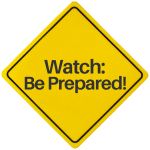
A Fire Weather Watch is issued to alert fire officials and firefighters of potentially dangerous fire weather conditions within the next 24 to 36 hours.
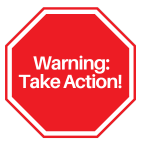
A Red Flag Warning is issued to alert fire officials and firefighters of potentially dangerous fire weather conditions within the next 12 to 24 hours.
The Federal Alliance for Safe Homes (FLASH) — a 501(c)(3) nonprofit organization — is the leading consumer advocate for strengthening homes and safeguarding families from natural and manmade disasters.
The Playbook provides proven strategies for all leaders who wish to drive resilience.
This annual conference brings together the nation’s leading voices in disaster safety.
Inspect2Protect will help you understand the building code where you live.
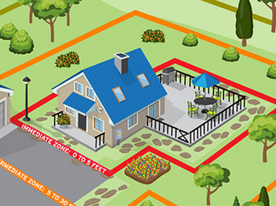
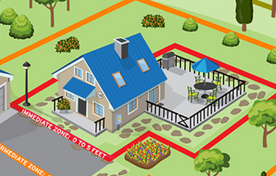
Wildfire Protection for Your Home
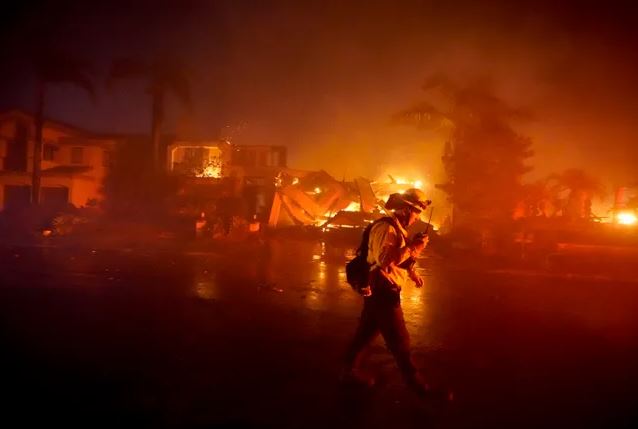

A Tale of Two Homes - Wildfire
Wildfires, also known as forest fires or bushfires, can start in several ways. The most common causes of wildfires include:
Lightning strikes are a common cause of wildfires in forests and grasslands. Dry weather conditions and strong winds can also contribute to the spread of wildfires ignited by lightning.
Human activities are responsible for most of the wildfires that occur. Careless discarding of cigarette butts, campfires left unattended, burning debris, fireworks, and intentional acts of arson are some of the most common ways that people start wildfires.
Electrical equipment, such as power lines or transformers, can sometimes cause sparks that ignite wildfires, especially during dry or windy conditions.
Once a wildfire is started, it can spread quickly, especially under hot, dry, and windy conditions. Wildfires can also be fueled by the presence of dry vegetation, such as trees, shrubs, and grasses, which can easily catch fire and spread flames. Wildfire embers can fly up to two miles away, causing ignition, so it is critical to keep a noncombustible defensible space around your home.
Preventing wildfires requires a combination of actions, including proper forest management, responsible use of fire, and public education on fire safety. When a wildfire does occur, firefighters and other emergency responders work quickly to contain and extinguish the fire to minimize damage to property and natural resources.
Wildfires can occur at any time of the year, but they are most common during periods of hot, dry weather. In many regions, the peak wildfire season occurs during the summer months, when temperatures are high and humidity is low. However, in some areas, wildfires can occur year-round, especially in places with dry and windy conditions.
Factors such as drought, heat waves, and high winds can increase the risk of wildfires by drying out vegetation and making it more susceptible to ignition. Lightning strikes are also more common during certain times of the year, which can increase the risk of wildfires caused by natural factors.
It’s important to note that wildfires can occur in any region, and even areas with relatively moist or wet conditions can experience wildfires if the weather conditions are right. It’s crucial to follow fire safety guidelines and monitor weather conditions in your area to minimize the risk of wildfires and stay safe if one does occur.